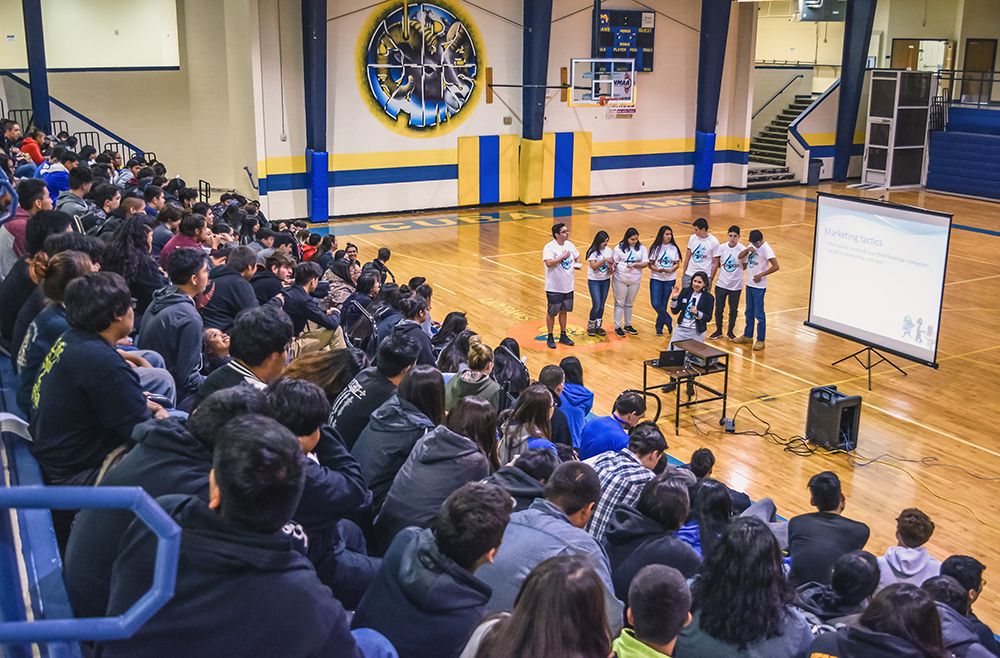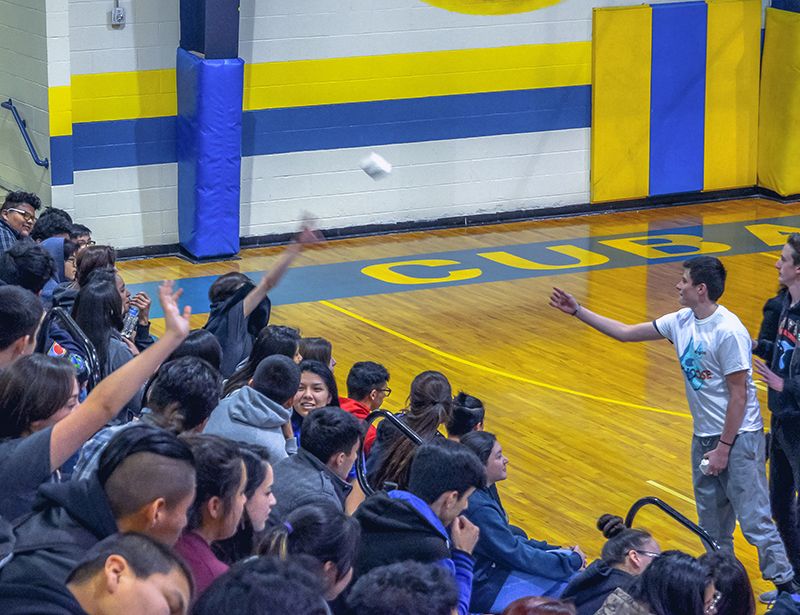#icH2Oose: Tales from a social media health campaign
The Choose H2O Challenge is an 8-week long contest designed to increase teens’ awareness about the health risks of sugary beverages, the benefits of water, and the influence of beverage marketing on their drink choices. Now in its second year, the Challenge started out as Dr. Emily Lilo’s PhD dissertation while at the University of New Mexico.
“The idea for the challenge came from community members who were concerned about kids drinking too much soda,” Dr. Lilo says. “Diabetes disproportionally affects Native Americans and Hispanic communities, and this school is almost entirely made up of kids from those two groups.”
The rules of the contest are simple. Each week, student complete “Splash Tasks” to earn “Splash Points.” Dr. Lilo posts the instructions for the tasks, and some nutrition education to go with them, on the Challenge’s Facebook page. To supplement the Facebook activities, there are also events most weeks at the school.
After completing the weekly Splash Task, students post on the Facebook page to earn their points. Most weeks also involve the opportunity to earn bonus points by involving family or friends. For example, if the task is to estimate your daily water needs, students can earn bonus points by estimating the water needs of someone else.
This year, students are competing as a grade against other grades (and the teachers). At the end of the challenge, the grade with the most points wins the grand prize (a school “lock-in”). The individuals with the highest points from each grade also win prizes like ticket packages to ice skating or glow golf.


...to change behaviors, you need to change social norms.
The contest’s engagement from last year was promising, reaching more than 40% of students at the school and resulting in a 42% increase in water bottle use.
“One student told me it was the ‘in thing’ for her and her friends to get their CamelBak bottles and go get water at the water bottle filling station.” Dr. Lilo remarks, “this was a big success because to change behaviors, you need to change social norms.”
Although she went to New Mexico for the kick-off event, Dr. Lilo has been more hands-off this year. She appointed 10 student ambassadors to run the campaign in her absence, plus a teacher who is acting as “on the ground” coordinator while Dr. Lilo provides regular technical assistance.
Dr. Lilo is testing the feasibility of this kind of student-driven campaign because she hopes to scale the project, and ideally have it implemented in multiple schools that can “challenge” each other. She also hopes to run the Choose H2O Challenge in a local Oregon school to see if the results are similar in a school with different demographics.

For those interested in health promotion campaigns such as this one, Dr. Lilo highlights the importance of community-driven change and recommends immersing yourself in the community culture as much as possible to better understand what is wanted and what is needed.
Students in this community care about their health, they’ve seen what diabetes can do. It’s just that they don’t know what is bad or how bad it is. For example, most kids know soda is bad, but they don’t know how much sugar is in sports drinks, lemonade, or iced tea. When you tell and show, the kids listen.

